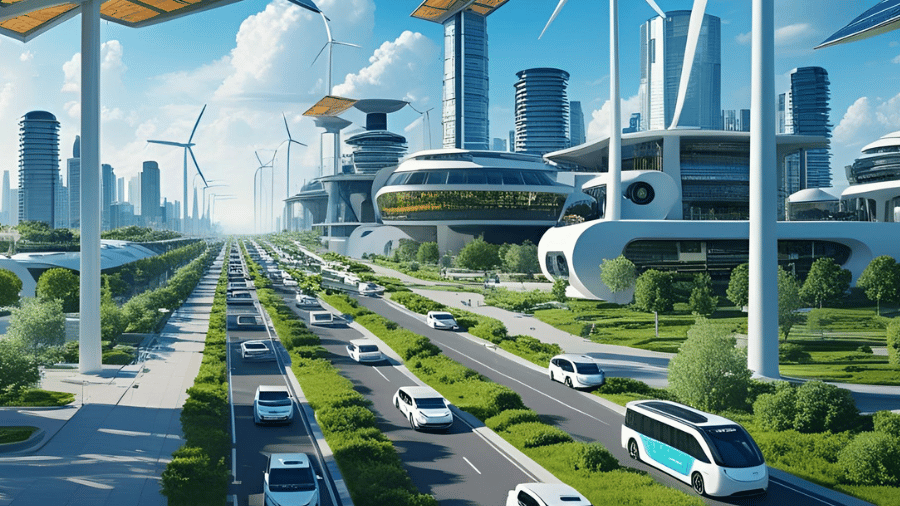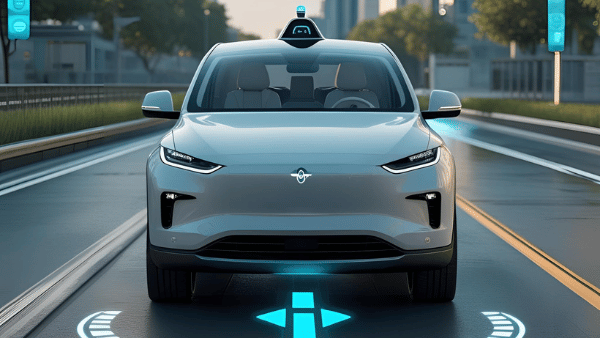Green Technology in 2025: Smart Solutions for a Sustainable Future

Green technology in 2025 is more than a movement—it’s a necessity. As climate change continues to threaten ecosystems and economies alike, businesses, governments, and communities are pushing the boundaries of innovation to build a more sustainable future. From solar-powered smart cities to electric transportation and zero-waste manufacturing, green technology is transforming how we power, move, build, and live. The result is a more intelligent and responsible approach to growth—one that doesn’t compromise the planet for progress.
The global rise of smart cities is one of the most significant examples of this shift. These urban spaces are being designed with sustainability at their core, using real-time data and renewable infrastructure to manage energy consumption, reduce emissions, and enhance quality of life. Cities like Singapore, Amsterdam, and Copenhagen are leading the way by integrating solar panels on every building, using AI to control traffic flow, and operating fleets of electric public transport. In India, cities like Pune and Hyderabad are adopting smart grid systems to balance electricity loads using renewable sources, a move that aligns with the country’s broader target of 500 GW of non-fossil energy capacity by 2030.
A major enabler of these advancements is the integration of clean energy solutions such as solar, wind, and green hydrogen. In 2025, solar energy continues to dominate as the most scalable and affordable green power source. Photovoltaic cells are now more efficient and cheaper to produce, allowing even small businesses and homes to participate in energy generation. According to the International Energy Agency (IEA), global solar capacity is set to surpass 400 GW by the end of 2025, with China, India, and the United States leading installations. Simultaneously, offshore wind projects in countries like the UK, Denmark, and Taiwan are bringing clean power to coastal populations, while innovations in floating wind farms are expanding access to wind energy in deeper waters.
One of the most exciting developments in green technology is the rise of green hydrogen as a clean fuel alternative. Unlike conventional hydrogen, which is derived from fossil fuels, green hydrogen is produced using renewable electricity and electrolysis, resulting in zero emissions. It holds particular promise for hard-to-decarbonize sectors such as steel, shipping, and aviation. Major players like Siemens Energy, Air Liquide, and Reliance Industries are investing heavily in green hydrogen infrastructure, with some regions already piloting hydrogen-powered buses and trains. In Japan, hydrogen is being used to power entire city districts like the futuristic town of Fukushima’s Hydrogen Energy Research Field (FH2R).
Electric vehicles (EVs) are also at the heart of the sustainability revolution. In 2025, nearly every major automaker has committed to electrifying their fleets, with many introducing new EV-only models. The result is not just reduced emissions but also smarter mobility ecosystems. EVs are being connected to the grid through vehicle-to-grid (V2G) systems, allowing them to act as mobile energy storage units. This means that an idle EV in a driveway can supply energy back to the home or grid during peak hours, reducing strain and increasing efficiency. Companies like Nissan and Tata Motors are experimenting with this concept, offering EVs that can “give back” to the system. This shift also aligns with our broader discussion on the future of vehicles in 2025, where smart transport is central to the green agenda.
Waste management is another area where green technology in 2025 is seeing breakthroughs. Smart recycling bins, powered by sensors and AI, are helping cities sort waste at the source. Platforms like Bin-e and Evreka are making waste collection more efficient by optimizing routes based on fill levels and usage patterns. Meanwhile, circular economy practices are pushing industries to reuse and upcycle materials. Fashion brands are creating clothing from ocean plastics and agricultural waste. Electronics manufacturers are launching repairable devices and offering take-back programs to recycle components. This mindset shift from disposable to regenerative is what sets 2025 apart from previous years of passive environmental policy.
Water conservation has also emerged as a critical component of green tech. Smart irrigation systems are now commonplace in agriculture, where sensors detect soil moisture and weather conditions to water crops only when needed. This not only saves water but also increases yields. In cities, leak-detection sensors are installed in municipal pipes to reduce water loss. Buildings are using greywater systems to reuse water for non-potable purposes like flushing toilets or watering plants. Startups like Plutoshift and FIDO Tech are applying machine learning to monitor and manage water usage with extreme precision.
Green building practices have evolved as well. Sustainable architecture in 2025 includes passive solar design, green roofs, energy-efficient glass, and biodegradable materials. Buildings are being constructed with the help of 3D printing, drastically reducing waste and resource use. Smart homes are equipped with systems that monitor air quality, temperature, and energy use to maintain comfort while conserving resources. This innovation extends into rural areas too, where eco-friendly, low-cost housing solutions are being developed for climate-resilient communities. In our earlier discussion on ethical innovation, we touched on how equitable access to sustainable housing is just as important as the technology itself.
Green fintech is an emerging area where finance meets environmental stewardship. In 2025, consumers and investors are demanding transparency around the environmental impact of their money. Fintech platforms now provide real-time ESG (Environmental, Social, and Governance) ratings on investment portfolios. Banks offer green bonds and climate-linked savings accounts. Startups like Aspiration and Tomorrow Bank give users carbon footprints of their purchases, encouraging conscious consumption. Governments, too, are incentivizing sustainable investments with tax benefits and low-interest loans for eco-projects, bridging the gap between capitalism and climate responsibility.
Even artificial intelligence is being harnessed for green goals. In 2025, AI models are predicting crop yields, optimizing renewable energy usage, and modeling climate risk for urban planning. Google’s Project Sunroof, for instance, uses AI to estimate solar potential for homes based on satellite data, helping homeowners make informed decisions about installing solar panels. These innovations reinforce the theme explored in our blog on AI co-pilots in productivity, highlighting how AI can also act as an environmental guide.
Despite the rapid progress, challenges remain. Ensuring equitable access to green tech across socio-economic lines is crucial. In many regions, the digital divide still prevents communities from adopting these solutions. International cooperation is essential to ensure developing countries aren’t left behind. Moreover, the green tech industry itself must remain accountable—ensuring that the raw materials used for solar panels, EV batteries, and electronics are ethically sourced and recyclable.
But the overall trajectory is optimistic. In 2025, green technology is not an add-on or marketing buzzword—it’s built into the blueprint of how the world works. It influences everything from the vehicles we drive to the cities we live in, the food we eat, and the air we breathe. It’s in the code, the circuit boards, the solar arrays, and the algorithms. It’s helping humanity reconnect with nature using innovation as a bridge.
As we continue tracking these innovations, The Visionary Spark remains committed to bringing you in-depth insights into how tech is shaping a better tomorrow. From green architecture to climate fintech, our next post will explore how even the financial system is evolving to align with planetary priorities.



